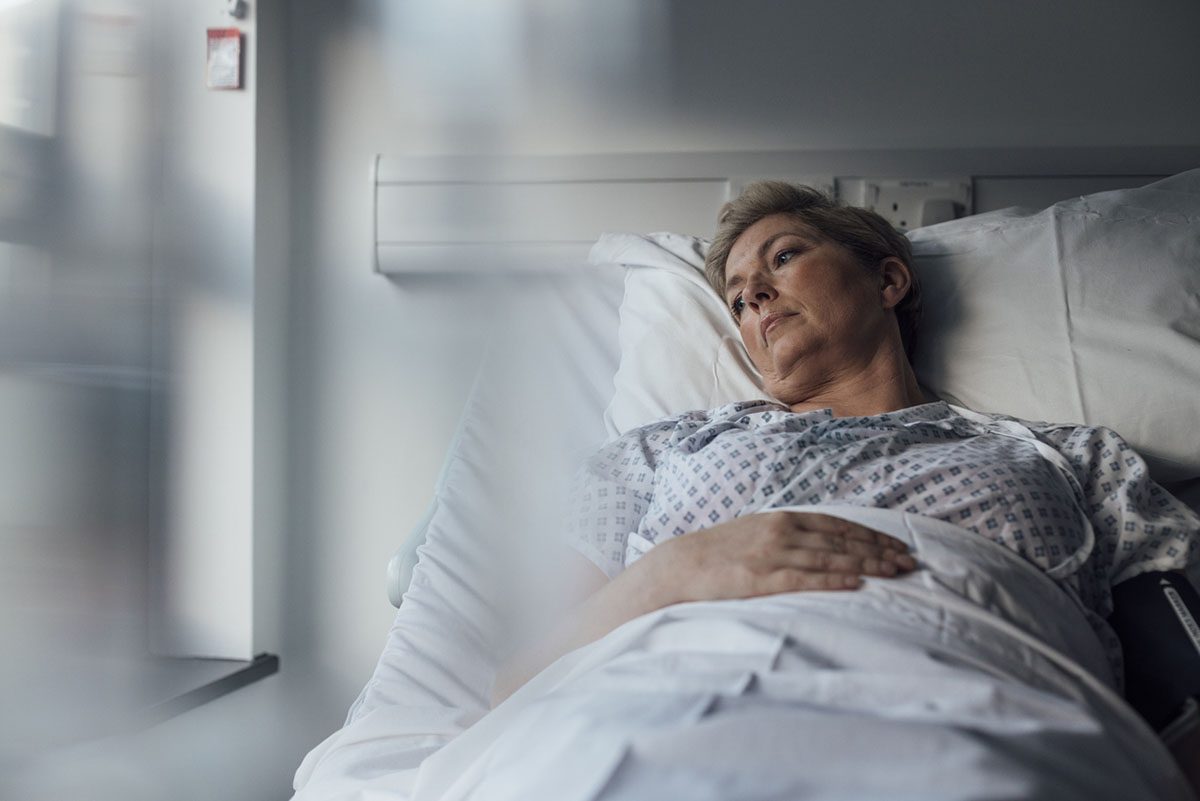

Electroconvulsive Therapy in Severe Obsessive-Compulsive Disorder:
A Series of Three Cases
Obsessive-compulsive disorder (OCD) is a chronic psychiatric disorder characterized by recurrent persistent thoughts and repetitive compulsory behaviors that cause significant dysfunction.1 Currently, cognitive-behavioral therapy and selective serotonin reuptake inhibitors are considered first-line treatments in its management. Previous studies2 have reported that 25%-40% of patients have persistent symptoms and dysfunction even after adequate treatment. In a few case reports,3-5 electroconvulsive therapy (ECT) has shown positive results in severe cases of OCD. Still, evidence showing the relationship between OCD and ECT is insufficient.6,7
We report 3 cases of severe OCD treated with ECT. All patients were admitted and diagnosed according to ICD-10 criteria. All routine investigations along with neuroimaging were within normal ranges. After informed consent, modified bifrontal ECT (ultrabrief pulse) (Medicaid, Medicaid Systems, Mohali Punjab, India) was administered (adequate dosage administered to get adequate seizure response) using propofol, succinylcholine, and glycopyrrolate.
Cases Series
Case 1. The patient was a 24-year-old woman with an illness of 3 months’ duration with abrupt onset and a progressive course characterized by obsessive doubts of contamination, obsessive fears of blasphemy, compulsive checking, compulsive washing, compulsive praying, and auditory hallucinations. She was started on fluoxetine and olanzapine, which were gradually optimized during the ward stay. However, she left against medical advice during the second week of admission. The patient was brought back to the hospital 3 days later after she attempted suicide at home. Her Yale-Brown Obsessive Compulsive Scale8 (YBOCS) score was 24 at that time. ECT was planned given the patient’s high risk for self-harm. A total of 12 sessions of ECT (3 sessions per week) were given. Her YBOCS score decreased from 24 to 4. She was discharged on fluoxetine (80 mg/d) and olanzapine (5 mg/d) and has responded well over the last 6 months.
Case 2. The patient was a 27-year-old man with an illness of 5 years’ duration with acute onset and progressive course characterized by obsessive doubts, obsessive impulses, and obsessive images of a sexual nature. He was diagnosed with OCD, predominantly obsessive type. He had not responded to fluoxetine (60 mg/d), sertraline (150 mg/d), mirtazapine (45 mg/d), or venlafaxine (150 mg/d); thought-stopping cognitive intervention technique; or cognitive-behavioral therapy (CBT) in the past. Thus, he was started and optimized on fluvoxamine (300 mg/d) and clomipramine (225 mg/d) during the next 4 weeks. The patient’s YBOCS score decreased from 24 to 22. ECT was planned in view of treatment resistance. The patient was given 12 sessions of ECT (3 sessions/wk), and his YBOCS score further decreased from 22 to 8. He was discharged on clomipramine (225 mg/d) and fluvoxamine (300 mg/d). After discharge, there was a slight deterioration in his condition, and clomipramine was increased to 300 mg/d and risperidone 2 mg/d was added to his regimen that included fluvoxamine 300 mg/d. He has maintained a positive response for the last 7 months.
Case 3. The patient was a 47-year-old woman with an illness of 2.5 years’ duration with abrupt onset and progressive course characterized by obsessive doubts, obsessive images of contamination, and compulsive washing and bathing. She did not let any of her family members cook food because of her obsessions. She had not responded to fluvoxamine 225 mg, fluoxetine 100 mg, escitalopram 40 mg, risperidone 4 mg, clomipramine 225 mg, or exposure response prevention therapy in the past. Given her history of treatment resistance, the patient received 8 sessions of ECT (3 sessions/wk). Pre- and post-ECT YBOCS scores were 33 and 29, respectively. The patient was discharged on clomipramine 300 mg and was lost to further follow-up.
Discussion
In this report, we have discussed 3 different cases of patients with severe OCD who responded differently to ECT. Demographic and clinical details are shown in the Table. Case 1 was a young woman with mixed-type OCD with comorbid auditory hallucinations and suicide attempt who received ECT without waiting for medications to take effect given her high risk for self-harm. She responded well to ECT. Case 2 was a young man with predominantly obsessive-type OCD who did not respond to standard treatment and thus received ECT in view of treatment resistance. Initially, he responded well to ECT; however, there was a slight deterioration post-discharge. Case 3 was a middle-aged woman with mixed-type OCD who received ECT as a result of treatment resistance; however, she did not respond to ECT.
These cases may help highlight predictors of ECT response in OCD cases. A systematic review by Fontenelle et al7 of 279 OCD patients showed that 60% of patients displayed some form of positive response to ECT. The responders exhibited a significantly later onset of illness, were more frequently nondepressed, more commonly reported being treated with ECT for severe OCD, and received a fewer number of ECT sessions. The responders were also less frequently previously treated with adequate trials of selective serotonin reuptake inhibitors and CBT.7 Some of these findings are consistent with our report, in which 2 of 3 patients responded well to ECT. Our responders were nondepressed and had severe OCD.
An Indian study9 displayed a short-lasting therapeutic effect of ECT in 9 patients with OCD. One of our patients did have a short-lived response that later required augmentation with an antipsychotic medication. Beale et al10 demonstrated a significant positive response of ECT in 3 resistant OCD cases. Maletzky et al11 found that the effect of ECT on OCD was independent of its effect on depression in 32 OCD patients, all of whom responded well to ECT irrespective of presence or absence of depression.
Despite having such a vast armamentarium of advanced treatment protocols, OCD remains a difficult illness to manage. Whether resistant or not, OCD is a challenge to treat because of its heterogeneous presentation. Two of our 3 patients were resistant, 1 of whom responded to ECT. The third patient, although not amply tried on medications, had to be given ECT due to high risk for self-harm, and she responded well.
To conclude, clear profiles of patients who are expected to benefit from ECT would be useful. We recommend that studies with larger sample sizes be undertaken to establish objective evidence of the role of ECT in OCD to ensure that these patients are not deprived of the benefits of this treatment modality.
Published online: May 30, 2019.
Potential conflicts of interest: None.
Funding/support: None.
Patient consent: Consent was received from all patients to publish this case series, and information has been de-identified to protect anonymity.
REFERENCES
1. World Health Organization. The ICD-10 Classification of Mental and Behavioural Disorders: Diagnostic Criteria for Research. Geneva, Switzerland: World Health Organization; 1993.
2. Pallanti S, Quercioli L. Treatment-refractory obsessive-compulsive disorder: methodological issues, operational definitions and therapeutic lines. Prog Neuropsychopharmacol Biol Psychiatry. 2006;30(3):400-412. PubMed CrossRef
3. Raveendranathan D, Srinivasaraju R, Ratheesh A, et al. Treatment-refractory OCD responding to maintenance electroconvulsive therapy. J Neuropsychiatry Clin Neurosci. 2012;24(2):E16-E17. PubMed CrossRef
4. Mellman LA, Gorman JM. Successful treatment of obsessive-compulsive disorder with ECT. Am J Psychiatry. 1984;141(4):596-597. PubMed CrossRef
5. Liu X, Cui H, Wei Q, et al. Electroconvulsive therapy on severe obsessive-compulsive disorder comorbid depressive symptoms. Psychiatry Investig. 2014;11(2):210-213. PubMed CrossRef
6. Dell’ Osso B, Altamura AC, Allen A, et al. Brain stimulation techniques in the treatment of obsessive-compulsive disorder: current and future directions. CNS Spectr. 2005;10(12):966-979, 983. PubMed CrossRef
7. Fontenelle LF, Coutinho ESF, Lins-Martins NM, et al. Electroconvulsive therapy for obsessive-compulsive disorder: a systematic review. J Clin Psychiatry. 2015;76(7):949-957. PubMed CrossRef
8. Goodman WK, Price LH, Rasmussen SA, et al. The Yale-Brown Obsessive Compulsive Scale. I. development, use, and reliability. Arch Gen Psychiatry. 1989;46(11):1006-1011. PubMed CrossRef
9. Khanna S, Gangadhar BN, Sinha V, et al. Electroconvulsive therapy in obsessive-compulsive disorder. Convuls Ther. 1988;4(4):314-320. PubMed
10. Beale MD, Kellner CH, Pritchett JT, et al. ECT for OCD. J Clin Psychiatry. 1995;56(2):81-82. PubMed
11. Maletzky B, McFarland B, Burt A. Refractory obsessive compulsive disorder and ECT. Convuls Ther. 1994;10(1):34-42. PubMed
aDepartment of Psychiatry, Lady Hardinge Medical College, New Delhi, India
*Corresponding author: Nitin Aggarwal, MD, Department of Psychiatry, Lady Hardinge Medical College, Panchkuian Marg, Connaught Place, New Delhi-110001, India ([email protected]).
Prim Care Companion CNS Disord 2019;21(3):18l02398
To cite: Aggarwal A, Aggarwal N, Prasad S. Electroconvulsive therapy in severe obsessive-compulsive disorder: a series of three cases. Prim Care Companion CNS Disord. 2019;21(3):18l02398.
To share: https://doi.org/10.4088/PCC.18l02398
© Copyright 2019 Physicians Postgraduate Press, Inc.
Please sign in or purchase this PDF for $40.00.





